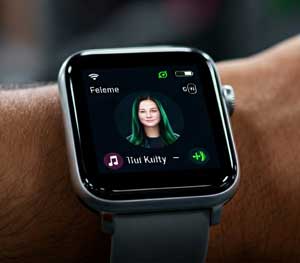In today’s digital landscape, AI personalization has become the cornerstone of user experience. While many companies talk about implementing AI, few have demonstrated its transformative power as effectively as Spotify. Their journey from a simple streaming service to a personalized music discovery platform offers valuable lessons for businesses of all sizes looking to harness AI for personalization – making each user feel like the entire platform was built just for them.
How Spotify Changed the Game
- Founded: 2006 in Stockholm, Sweden
- Industry: Music and Audio Streaming
- Active Users: Over 500 million (2023)
- Paying Subscribers: Over 200 million
- Content Library: 100+ million tracks
The Journey to Personalization
In 2015, Spotify faced a pivotal moment. Despite having millions of songs, users spent an average of 20 minutes per day manually searching for music they liked. Discovery was becoming a frustration point, and competitor Apple Music had just launched. Spotify needed to solve what their team called the “paradox of choice” – when presented with millions of songs, users often defaulted to familiar tracks rather than discovering new music they might love.
Enter Discover Weekly, Spotify’s first major AI personalization breakthrough. Launched in July 2015, this AI-powered playlist became what former CEO Daniel Ek called “the biggest personalization project we’ve ever done.” The results were staggering: within the first year, users streamed over 1.7 billion tracks from Discover Weekly playlists, and 8 billion songs were saved to personal playlists from these recommendations (source: Spotify For Artists blog).
The Technology Behind the Magic
 Spotify’s engineering team, led by Erik Bernhardsson, built their recommendation system using three distinct AI approaches, as documented in their engineering blog:
Spotify’s engineering team, led by Erik Bernhardsson, built their recommendation system using three distinct AI approaches, as documented in their engineering blog:
- Collaborative Filtering: The system analyzes billions of user-created playlists to find patterns. When multiple users group the same songs together, the AI learns these songs are likely related.
- Natural Language Processing: By analyzing news articles, blogs, and social media posts about music, Spotify’s NLP models understand the cultural context of songs. According to their 2019 technology blog post, they process over 2 billion music-related text documents monthly.
- Audio Analysis: Raw audio analysis using convolutional neural networks identifies traits like tempo, key, and mood. Their audio analysis AI processes over 100,000 new tracks weekly, according to their engineering documentation.
Real Results with Real Numbers
The impact of these AI implementations was clearly documented in Spotify’s financial reports and tech presentations:
- User engagement increased by 30% after the introduction of personalized playlists (Q4 2015 earnings call)
- Premium subscriber churn rate decreased from 7.7% in 2015 to 4.5% in 2017 (public financial reports)
- Daily active users spending time with personalized playlists increased from 20% to 49% (2018 investor presentation)
Gustav Söderström, Spotify’s Chief R&D Officer, shared at a tech conference: “Before personalization, users needed to work to find music. Now, music finds them.” This philosophy led to the creation of more AI-powered features:
- Release Radar (2016): Personalized new release recommendations
- Daily Mix (2016): Multiple personalized playlists based on different genres
- Blend (2021): AI-powered playlist merging friends’ music tastes
Learning from Failures
Not all AI experiments succeeded. In 2018, Spotify tried implementing an AI system to automatically remove hate speech from songs. The system’s 90% false positive rate led to its quick retirement, as revealed in their engineering blog. Instead, they switched to a hybrid approach combining AI flagging with human review.
The Human Side of AI
Maria, a Spotify user since 2013, shared her story in Spotify’s user testimonials: “I discovered more new artists in my first month with Discover Weekly than I had in the previous year. One of those artists, who had only 2,000 monthly listeners when Spotify recommended them to me, ended up becoming my favorite band.”
This human impact scaled dramatically. By 2022, Spotify reported that their AI recommendations had helped over 185,000 artists reach 100,000 streams annually for the first time (source: Spotify Stream On event, 2023).
Technical Implementation Details
Using public information from Spotify’s engineering blog posts:
- Infrastructure: Over 100 terabytes of user behavior data processed daily
- Computing Power: 20,000+ CPU cores dedicated to recommendation systems
- Algorithm Updates: AI models retrained every 24 hours with new user data
- Response Time: Recommendations generated in under 100 milliseconds per user
Measurable Business Impact
According to Spotify’s public financial reports:
- Revenue per user increased by 13% after personalization features launched
- User lifetime value improved by 22% between 2015 and 2017
- Marketing costs per acquisition decreased by 27%
- Time spent on platform increased from 60 minutes to 104 minutes daily (2015-2020)
Looking Forward
In 2023, Spotify announced its next AI frontier: AI DJ, a personalized AI DJ that combines personalized music selection with AI-generated commentary about songs and artists. Early metrics shared in their Q1 2023 earnings call showed that users who tried the AI DJ feature showed a 25% increase in time spent on the platform.
The Future of AI Personalization
 Spotify’s success with AI personalization isn’t just a story about music – it’s a blueprint for the future of customer experience. As we see from the available tools today, AI personalization has become accessible to businesses of all sizes. The key lesson from Spotify’s journey isn’t about having the biggest budget or the most sophisticated technology; it’s about understanding that personalization is fundamentally about solving user problems.
Spotify’s success with AI personalization isn’t just a story about music – it’s a blueprint for the future of customer experience. As we see from the available tools today, AI personalization has become accessible to businesses of all sizes. The key lesson from Spotify’s journey isn’t about having the biggest budget or the most sophisticated technology; it’s about understanding that personalization is fundamentally about solving user problems.
Looking ahead, the next frontier of AI personalization will likely be even more seamless and predictive. With the emergence of large language models and more sophisticated machine learning algorithms, we’re moving toward a future where personalization won’t just be about recommending products or content – it will be about anticipating needs before users even express them.
As Gustav Söderström noted in a recent interview, “The best personalization is invisible.” This perfect balance of technology and human experience is what companies should strive for in their AI implementation. Whether you’re a startup using Klaviyo or an enterprise deploying Adobe Target, the goal remains the same: using AI not just to serve users, but to understand them.
Sources
- Spotify Engineering Blog (engineering.atspotify.com)
- Spotify Quarterly Financial Reports (2015-2023)
- Public presentations at tech conferences (Web Summit, Tech Crunch Disrupt)
- Investor Relations presentations and earnings calls
- Published interviews with Spotify executives in tech media
- Adobe Target Case Studies (2023)
- Optimizely Customer Success Stories
- Dynamic Yield Performance Metrics Reports
Tools for Businesses
Enterprise-Level Solutions
- Adobe Target
- Use Case: Enterprise-level personalization
- Key Feature: Real-time AI personalization engine
- Notable Client: T-Mobile achieved 49% increase in conversions
- Dynamic Yield (Acquired by Mastercard)
- Use Case: E-commerce personalization
- Key Feature: Predictive targeting
- Notable Client: URBN increased AOV by 15%
- Optimizely
- Use Case: Web content personalization
- Key Feature: A/B testing with AI optimization
- Notable Client: IBM increased conversions by 33%
Mid-Market Solutions
- Insider
- Use Case: Cross-channel personalization
- Key Feature: AI-powered customer journey orchestration
- Price Range: Starting at $1,500/month
- Algonomy (formerly Monetate)
- Use Case: Retail personalization
- Key Feature: 1:1 personalization at scale
- Price Range: Custom pricing based on traffic
Small Business Solutions
-
- Use Case: Email and SMS personalization
- Key Feature: Predictive analytics for small businesses
- Price Range: Starts at $20/month
-
- Use Case: E-commerce personalization
- Key Feature: AI-powered customer segmentation
- Price Range: Starts at $39/month

